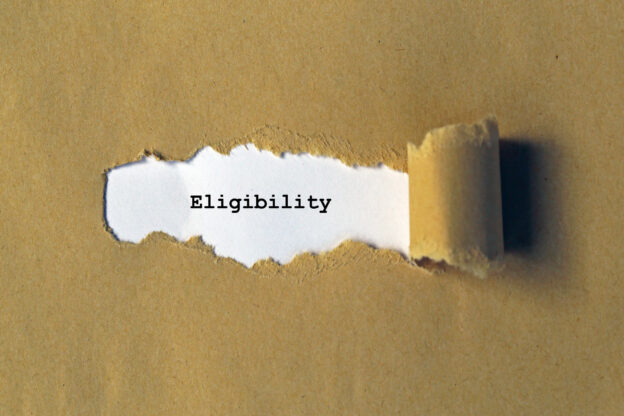The Payment Card Interchange Fee Settlement has significant implications for businesses that accept credit and debit card payments. Navigating the complexities of this settlement can be challenging, and seeking legal advice is crucial to ensure that your business maximizes its potential benefits and complies with all necessary regulations. This guide provides a comprehensive overview of the legal considerations for businesses affected by the Interchange Fee Settlement, including when to seek legal counsel, how lawyers can assist in the claims process, and how to find the right legal representation for your business.
What is the Interchange Fee Settlement and How Does it Affect Businesses?

The Interchange Fee Settlement addresses the issue of excessive interchange fees, which have been a burden on businesses for years. These fees, typically a percentage of each transaction, are paid by merchants to credit card companies and banks. The settlement aims to provide relief to businesses by reducing these fees and introducing transparency and competition in the credit card industry.
The impact of the Interchange Fee Settlement on businesses can be significant. It offers businesses the opportunity to recover a portion of the interchange fees they have paid in the past and potentially reduce future fees. However, navigating the claims process and understanding the legal implications can be complex, making it crucial for businesses to seek professional legal counsel.
Who is Eligible for a Claim?
Eligibility for a claim depends on several factors, including the time period during which your business accepted Visa and Mastercard payments. Generally, businesses that accepted these payments between January 1, 2004, and January 25, 2019, are eligible to file a claim. However, specific eligibility criteria may vary, so it is essential to review the settlement details carefully or consult with a legal expert.
When to Seek Legal Counsel: Recognizing the Need for Professional Assistance
The process of filing a claim under the Interchange Fee Settlement can be daunting, especially for businesses unfamiliar with legal proceedings. Here are some key indicators that it may be time to seek legal counsel:
- Complexity of the Claims Process: The claims process involves extensive documentation and strict deadlines. Legal counsel can help ensure all necessary paperwork is accurately completed and submitted on time.
- Maximizing Settlement Benefits: Lawyers can help businesses understand the full extent of the settlement benefits and how to maximize their claims.
- Compliance with Regulations: Ensuring compliance with all regulatory requirements is crucial to avoid legal complications. Legal counsel can provide guidance on adhering to these regulations.
How Lawyers Can Assist in the Claims Process: Exploring their Role and Expertise
Legal experts play a vital role in the Interchange Fee Settlement claims process. Here are some ways in which they can assist your business:
Claim Evaluation and Preparation

Lawyers can help assess your business’s eligibility for a claim and estimate the potential compensation. They can gather and organize the necessary documentation, ensuring that your claim is well-prepared and comprehensive.
Navigating Legal Complexities
The settlement process involves various legal complexities, including understanding the terms of the settlement, compliance requirements, and deadlines. Lawyers can provide clarity and guidance, helping your business avoid potential pitfalls.
Dispute Resolution
If any disputes or issues arise during the claims process, legal counsel can represent your business’s interests, negotiate with the settlement administrators, and resolve any conflicts efficiently.
Maximizing Compensation
Experienced lawyers can identify all possible avenues for compensation, ensuring that your business receives the maximum settlement amount it is entitled to. They can also advise on the best strategies to present your claim effectively.
Finding the Right Legal Representation for Your Business
Selecting the right legal representation is crucial to the success of your claim. Here are some tips to help you find the best lawyer for your business:
Experience and Expertise
Look for lawyers or law firms with extensive experience in handling class-action settlements and business claims. Expertise in antitrust law and familiarity with the Interchange Fee Settlement will be particularly beneficial.
Reputation and Track Record
Research the reputation and track record of potential lawyers or firms. Look for client testimonials, case studies, and success rates in similar cases. A lawyer with a proven track record of successful claims can provide confidence in their ability to handle your case effectively.
Fee Structure
Understand the fee structure of the legal services. Some lawyers may work on a contingency basis, meaning they only get paid if you receive a settlement. Others may charge hourly rates or flat fees. Ensure that the fee arrangement aligns with your business’s financial situation and expectations.
Communication and Accessibility
Effective communication is essential throughout the claims process. Choose a lawyer who is accessible, responsive, and willing to explain complex legal concepts in understandable terms. A good lawyer should keep you informed and updated on the progress of your claim.
Understanding the Claims Process: Step-by-Step Guide for Businesses
The claims process for the Interchange Fee Settlement involves several steps that businesses must follow to ensure a successful claim. These steps include:
Navigating the claims process under the Interchange Fee Settlement can be intricate and challenging for businesses. This step-by-step guide aims to simplify the process, ensuring businesses can effectively file their claims and maximize their potential recovery.
Step 1: Determine Eligibility
The first step is to verify if your business is eligible to file a claim. Generally, businesses that accepted Visa and Mastercard payments between January 1, 2004, and January 25, 2019, are eligible. Review the settlement details or consult with a legal expert to confirm your eligibility.
Step 2: Gather Documentation
Accurate and comprehensive documentation is crucial for a successful claim. Collect all relevant records, including:
- Transaction Records: Detailed records of Visa and Mastercard transactions during the eligible period.
- Merchant Statements: Monthly merchant statements that detail interchange fees paid.
- Financial Records: Any other financial documents that support your claim.
Step 3: Complete the Claim Form
Obtain the official claim form from the settlement administrator’s website. Carefully fill out the form, ensuring all required fields are completed accurately. Double-check for any errors or omissions that could delay the processing of your claim.
Step 4: Submit the Claim
Submit your completed claim form along with all required documentation to the settlement administrator. Ensure you adhere to the submission deadline to avoid disqualification. It’s advisable to keep copies of all submitted documents for your records.
Step 5: Monitor the Claim Status
After submission, regularly check the status of your claim. The settlement administrator may require additional information or clarification, so be prompt in responding to any requests. Maintaining communication with the administrator helps ensure a smooth process.
Step 6: Receive the Settlement Payment
Once your claim is approved, you will receive a settlement payment. The amount will depend on various factors, including the total interchange fees paid by your business during the eligible period and the number of valid claims submitted.
Step 7: Consult with Legal Counsel
Throughout the claims process, consider consulting with legal counsel. A lawyer experienced in dealing with the Interchange Fee Settlement can provide valuable assistance, from verifying eligibility and gathering documentation to completing forms and monitoring the claim status. Legal counsel can help ensure you maximize your recovery and comply with all procedural requirements.
Common Challenges Faced by Businesses in the Interchange Fee Settlement
While the Interchange Fee Settlement offers significant benefits to businesses, there are challenges that they may encounter during the claims process. These challenges include:
- Complex eligibility criteria: Understanding and meeting the eligibility criteria can be challenging for businesses, especially those with multiple locations or complex payment processing systems.
- Document collection and organization: Gathering the necessary documentation can be time-consuming and requires meticulous attention to detail.
- Negotiations with credit card companies: Negotiating with credit card companies can be daunting, as they have legal teams dedicated to protecting their interests.
- Timely submission of claims: Meeting the deadlines for claim submission is crucial, as late submissions may result in businesses being excluded from the settlement.
Finding the Right Legal Representation for Your Business: Factors to Consider
Finding the right legal representation is crucial for businesses seeking assistance in the Interchange Fee Settlement. When selecting an attorney, consider the following factors:
- Experience and expertise: Look for attorneys with experience in complex commercial litigation and a deep understanding of the credit card industry.
- Track record: Research the attorney’s track record in handling similar cases and their success rate in securing favorable outcomes for clients.
- Resources and support: Ensure that the attorney has the necessary resources and support staff to handle your claim effectively.
- Communication and accessibility: Choose an attorney who communicates clearly, promptly responds to inquiries, and keeps you informed throughout the process.
Frequently Asked Questions
1. Can I handle the claims process without legal representation?
While it is possible to handle the claims process independently, seeking legal representation can significantly increase your chances of maximizing your benefits in the settlement.
2. How long does the claims process take?
The duration of the claims process can vary depending on various factors, including the complexity of your claim and the volume of claims being processed. It is advisable to consult with your attorney for an estimate.
3. What documents do I need to submit with my claim?
The required documentation may include financial records, transaction data, and other supporting documents that demonstrate your eligibility and the amount of interchange fees paid.
4. Can I negotiate the compensation amount with credit card companies?
Yes, negotiations with credit card companies are possible. An experienced attorney can help you navigate these negotiations and secure the best possible outcome.
Conclusion
The Interchange Fee Settlement presents a significant opportunity for businesses to recover past interchange fees and reduce future fees. However, the claims process can be complex and challenging to navigate without professional legal counsel. By seeking the assistance of experienced attorneys, businesses can ensure they maximize their benefits and protect their rights throughout the settlement.
















